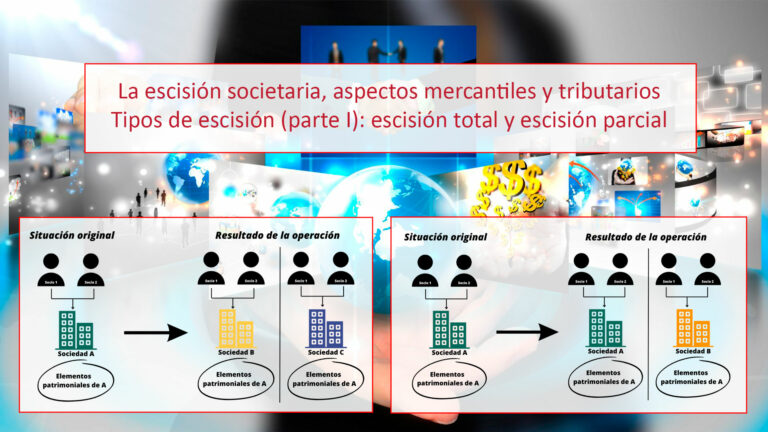
The corporate division restructure operation must be addressed from both a commercial and tax perspective, since the different types of divisions are regulated not only by the Structural Modifications Law (hereinafter, LME) but also by the Corporate Income Tax Law (hereinafter, LIS).
It is important to review both regulatory texts in order to have a complete overview of the types of divisions and, especially, to ensure that the requirements for qualifying for the special regime of Title VII, Chapter VII of the LIS are met.
We can distinguish between the types of divisions detailed below:
From the definition given in Article 69 of the LME (Spanish Law on Business and Investment), it can be concluded that a company is dissolved to create new companies (beneficiaries or acquirers) to which it transfers its assets by universal succession, with the partners receiving shares or stock in the beneficiary company or companies in proportion to their stake in the company being spun off. This would be a total division.
Below we graphically reflect the total split:
This type of division, for tax purposes, is covered by Article 76.2.1. a) of the Spanish Commercial Law (LIS), which adds to the definition given by the Spanish Commercial Law (LME), that the shareholders of the spun-off company will be awarded securities representing the share capital of the acquiring entities or monetary compensation not exceeding 10% of the nominal value or, in the absence of a nominal value, a value equivalent to the nominal value of said securities deducted from their accounting records.
Partial demerger, as set out in Article 70 of the LME, can be defined as the transfer in bloc by universal succession of one or more parts of the assets of an existing company (each of which forms an economic unit) to another newly created or pre-existing company or companies, with the shareholders of the company being demerged receiving in exchange shares or stocks of the beneficiary company, in proportion to their participation in the demerged company.
Unlike in a total division, in a partial division the company is not extinguished.
We show graphically an example of partial division:
The definition of partial division is also included in Article 76.2.1. b) of the LIS, but this article establishes certain specificities with respect to the LME. While the LME refers to the transfer from the spun-off company to the acquiring company of parts of its assets that constitute an economic unit, the LIS refers to the transfer of parts of the spun-off company’s assets that constitute a branch of activity.
However, there is no appreciable difference between the concepts of an economic unit and a branch of activity, since a branch of activity is understood to be the set of assets that make up an economic unit. Furthermore, the General Directorate of Taxes defines a branch of activity as:
“an autonomous economic activity that allows for the identification of a set of assets affected or destined for it, which requires that this autonomy be motivated by the different nature of the activities carried out by each branch or, if there is a single activity, that requires a separate organization as a result of the existing specialties in its economic exploitation that require a differentiated management model determining different autonomous economic exploitations.”
Furthermore, in addition to this small conceptual difference between the LME and the LIS, the LIS offers another particularity to take into account, and that is that at least one branch of activity must be maintained in the spun-off company, at least whenever we want to apply the special regime that allows us to defer the tax generated by the gain on the transfer.
Furthermore, the Supreme Court, through several rulings, including the judgment of April 23, 2015, has affirmed that the existence of a branch of activity in both the acquiring and transferring entities will be necessary to qualify for the special deferral regime of Title VII, Chapter VII of the LIS.
In any case, to carry out a division, if we want to benefit from the special regime of Title VII, Chapter VII of the LIS, we must be very attentive to the requirements of the Corporate Income Tax Law, in addition to providing a valid economic reason. Therefore, we cannot rely exclusively on the Structural Modifications Law when carrying out a division.
In the second part of this post, we will analyze the remaining types of corporate divisions, considering both their commercial and tax aspects.
The valuation of shares or participations company's valuation is a requirement for tax purposes due…
The historical background of the trust dates back to Roman and Germanic law, although it…
Personal income tax is a direct, personal tax levied on the income of individuals, based…
As corporate restructuring transactions, securities exchange transactions are eligible for the special tax regime for…
This article is a continuation of the article "The merger of companies. General aspects" and…
The purpose of this article is to analyze one of the so-called "Special Mergers" regulated…